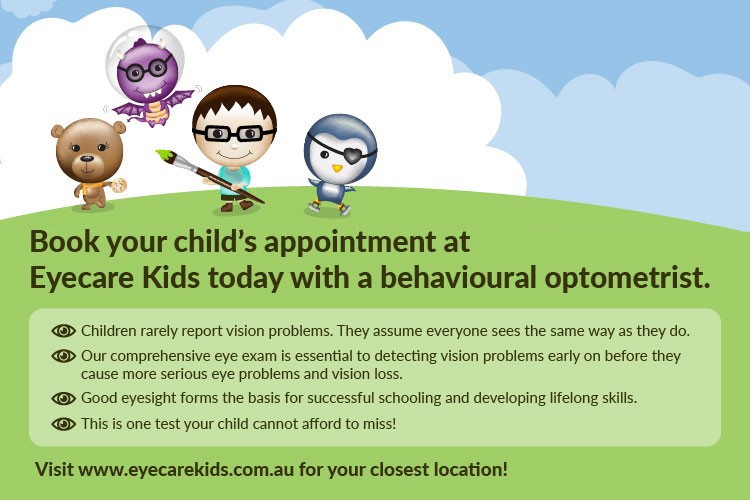Who hasn’t enjoyed all the movie blockbusters like Annie, Hunger Games: Mockingjay – Part 1 and The Hobbit: The Battle of the Five Armies and enjoying them as a 3-D movie? Whilst 3-D movies are fun and novel, behavioural optometrists from Eyecare Kids cautions 3D movie viewing for young children and adults with impaired vision.
All 3D glasses work by filtering images so that the left eye sees one image, and the right eye sees a slightly different image. It’s then up to the brain to fuse them together to perceive a 3D image. For this process to happen, the viewer’s eyes must work well together. Where their vision is underdeveloped or damaged, these 3D glasses may cause fatigue or discomfort.
The optometry sector’s peak body recommends exercising caution before opting for the 3D movie experience. Optometrist, Soojin Nam comments: “Children and people with poor 3D or binocular vision may notice problems from extended periods of 3D viewing”.
“For young children, the glasses require the brain to work hard to process the images. During a long movie, this can create tiredness and discomfort. This is due to the negative effects or strain of the vergance-accommodation conflict, where the brain tries to process two different visual images into one image”.
“While we understand the pressure on parents to allow their children to participate in this type of activity, Optometry Australia is recommending caution in allowing children under the age of six access to 3D content, and that access for those up to the age of 13 should be moderate, with parents vigilant concerning any resulting symptoms”.
Sooin Nam recommends that viewing 3D movies or television programs shouldn’t be treated any differently to 2D versions. “With 3D movies sitting too close to the screen can increase the strain on the visual system in trying to fuse these images together”.
“Anyone who experiences vision conditions such as blur, nausea, tiredness or headaches while watching a movie or playing computer games in 3D or 2D should have their eyes examined by an eye care professional. Optometrists are able to measure the amount of 3D vision you have at near, also known as stereopsis, and in some circumstances, stereopsis can be improved with spectacles or vision therapy”.
Research from the French agency ANSES released in November 2014 recommended restricting access to 3D content for children under six and follows similar warnings from games manufacturer Nintendo in 2010 when it released its 3D games console. Italy has been the first country to restrict
the use of 3D glasses by young children following a similar warning from its health agency last year. At this time the American Optometric Association has said it has no reports of eye damage as a result of viewing 3D content and comments that further research was needed as the technology was still fairly new.
Our optometrists want parents to be aware of the impact of “screen time” on their children’s eyes – such as through watching TV, playing on smartphones, tablets and computers and recommends parents ensure kids take regular breaks.
“Many studies are now also investigating links between the amount of time kids spend indoors and focussing on near-based activities with the development of myopia or short-sightedness”
Top Tips: Caring for eyes in front of the screen
- Limit children’s 3D viewing to avoid extended periods of use.
- Do not use 3D glasses as an alternative to sunglasses.
- If you or your child wear glasses or contact lenses for distance vision normally these should be worn underneath the 3D glasses.
- Ensure children play outdoors for a few hours each day to ‘balance screen time with green time’
- Make sure your child takes regular breaks when using a computer, a tablet or smartphone – at least five to 10 minutes every hour.
- Ensure that the room your child is using the device in is comfortably lit, so they don’t have to strain their eyes.
- Children’s visual systems develop rapidly – they should have regular vision and eye health
examinations with their optometrist.

